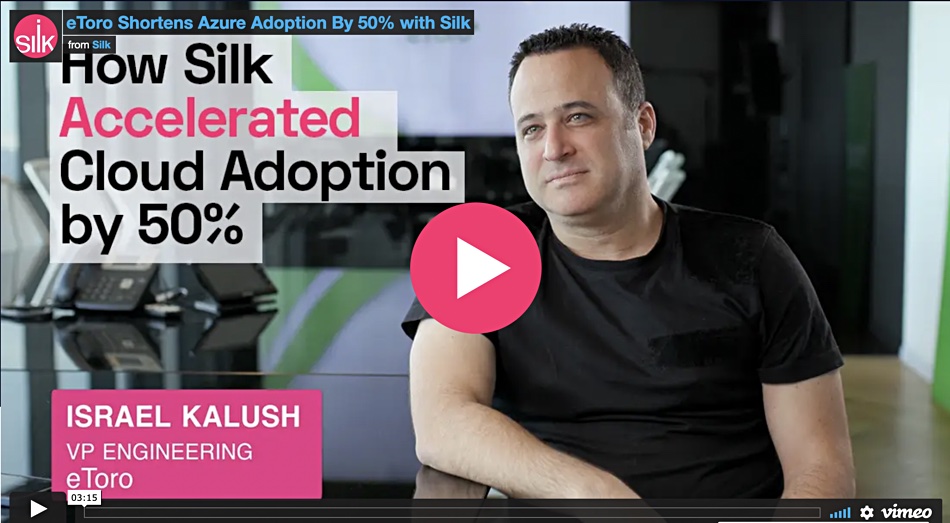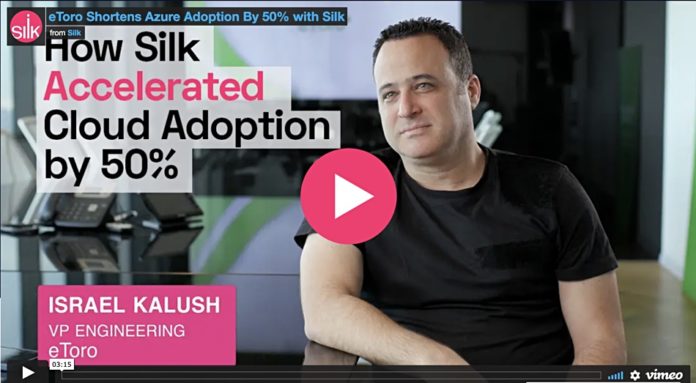Silk’s accelerated storage IO in the public cloud can make lifting and shifting non-cloud-native databases and other workloads to the cloud straightforward, and have them operate much faster and with sub-millisecond latency.
Online trader Etoro, which started up on 2007, has grown to more than 20 million customers hitting its on-premises data centres with trading requests. These data centres couldn’t keep up, and Etoro decided to move its databases and applications across to the Azure cloud and take advantage of its ability to scale quickly.
It considered doing so using PaaS (Platform-as-a-Service), but that would have required Etoro to change its database and application code — adding middleware, to use the underlying Azure platform facilities. This was unrealistic.
The alternative was IaaS (Infrastructure-as-a-Service), with Azure server, network, operating systems, and storage facilities presented virtually. This was much faster to implement, but the resulting performance — particularly of SQL Server — wasn’t good enough
Israel Kalush, VP of Engineering, eToro, said: “While some applications can be migrated easily into the cloud, others — especially ones that require high throughput IO with very low latency — are more complicated and require significant redesign. Significant redesign is expensive and, therefore, less likely to take place.”
Silk provides virtual storage array services in the Azure cloud, developed from its on-premises Kaminario all-flash array code base. The cloud-native software delivers high-speed storage IO by using, and protecting, Azure’s fast and unprotected ephemeral OS disks, which incur no storage cost. In effect, it is a database acceleration layer of software.

The Silk code provides compression, zero-footprint clones, and inline deduplication. It says its users are then able to reduce the amount of cloud resources they need, and cut cloud costs by around 30 per cent.
Etoro decided to use this Silk storage layer between its software and the Azure facilitie,s and found its software ran up to ten times faster on Azure than without Silk. Using Silk made its Azure incarnation capable of supporting hundreds of thousands of database transactions a second at low latency.
Kalush said: “We have some extremely IO-intensive databases. Silk was the only provider that actually promised and delivered on sub-millisecond latency for those database applications.” Etoro has found that this low response time is maintained under heavy loads.
It also says its Azure adoption time was cut in half by using Silk, obviating the need to refactor its code. Check out a video to find out more.








